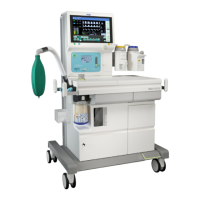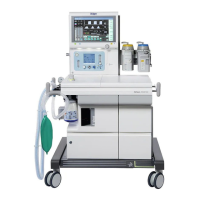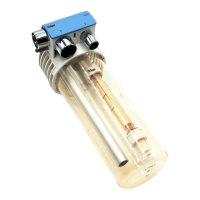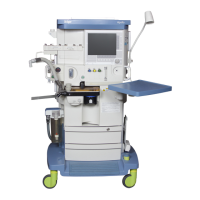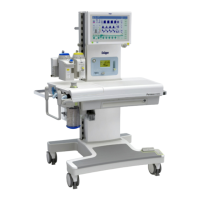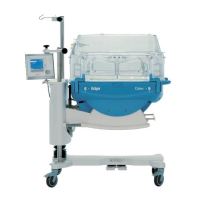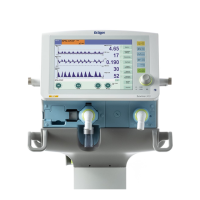Instructions for use | Atlan A100 (XL), A300 (XL), A350 (XL) SW 2.1n 321
Principles of operation
16.3.7 Pressure regulation and PEEP compensation
In mechanical ventilation modes, the set PEEP is actively adjusted during
ventilation. This enables compensation for small leaks at the tube or in the
breathing circuit.
In pressure-controlled ventilation modes, the pressure is controlled as described
during the entire respiratory cycle.
16.3.8 Variable PEEP for improved CO2 measurement
To improve the CO2 measurement, a variably controlled PEEP ensures that the
patient’s expiratory gas is supplied to the sampling site during the entire expiration.
Expiration starts with a slightly increased PEEP which is lowered to a value slightly
below the set value during the expiration.
This minimizes effects such as cardiogenic oscillations in the CO
2 waveform and
improves the measurement accuracy.
16.4 CO2 measurement with pediatric patients and neonates
16.4.1 Influence of the dead space
To enable effective gas exchange even with small tidal volumes, the dead space
has to be as small as possible when ventilating smaller pediatric patients
(VT < approx. 30 mL) and neonates. Components between the Y-piece and the
endotracheal tube, e.g., filters, present an additional dead space. These
components should be avoided or be as small as possible.
Depending on the sampling site, ventilation influences such as turbulence at the
Y-piece can result in unusual waveform shapes during the CO
2 measurement.
As a consequence, the CO
2 waveform, for example, may fall at the end of the
expiration before the inspiration is executed, in contrast to the normal course of the
waveform. In addition, cardiogenic oscillation can occur.
Generally, the measured etCO
2 values are still valid, as these measured values
correspond to the maximum expiratory values and do not follow the course of the
CO
2 waveform.
In the case of stronger influences, the measured etCO
2 values may be distorted.
37888
100 CO
0
2

